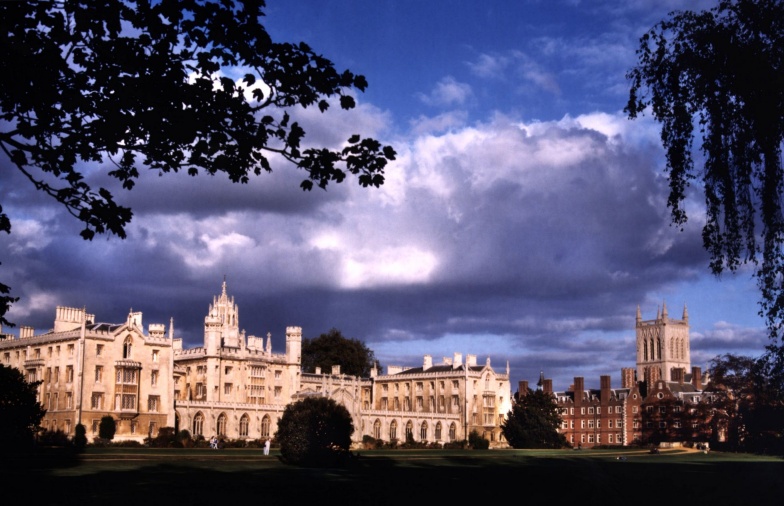|
Louise Leakey
Princess Louise de Merode (''née'' Leakey, born 21 March 1972) is a Kenyan paleontologist and anthropologist. She conducts research and field work on human fossils in Eastern Africa. Early life and education Louise Leakey was born in Nairobi, Kenya, to Kenyan paleoanthropologist, conservationist and politician Richard Leakey and British paleoanthropologist Meave Leakey in 1972, the same year that her paleoanthropologist grandfather, Louis Leakey, died. She first became actively involved in fossil discoveries in 1977, when at the age of five she became the youngest documented person to find a hominoid fossil. Leakey earned her International Baccalaureate from United World College of the Atlantic and a Bachelor of Science degree in geology and biology from the University of Bristol. She earned a PhD from the University College, London in 2001. Career In 1993, Leakey joined her mother as a co-leader of paleontological expeditions in northern Kenya. The Koobi Fora research projec ... [...More Info...] [...Related Items...] OR: [Wikipedia] [Google] [Baidu] |
Nairobi
Nairobi ( ) is the capital and largest city of Kenya. The name is derived from the Maasai phrase ''Enkare Nairobi'', which translates to "place of cool waters", a reference to the Nairobi River which flows through the city. The city proper had a population of 4,397,073 in the 2019 census, while the metropolitan area has a projected population in 2022 of 10.8 million. The city is commonly referred to as the Green City in the Sun. Nairobi was founded in 1899 by colonial authorities in British East Africa, as a rail depot on the Uganda - Kenya Railway.Roger S. Greenway, Timothy M. Monsma, ''Cities: missions' new frontier'', (Baker Book House: 1989), p.163. The town quickly grew to replace Mombasa as the capital of Kenya in 1907. After independence in 1963, Nairobi became the capital of the Republic of Kenya. During Kenya's colonial period, the city became a centre for the colony's coffee, tea and sisal industry. The city lies in the south central part of Kenya, at an elevation ... [...More Info...] [...Related Items...] OR: [Wikipedia] [Google] [Baidu] |
Louis Leakey
Louis Seymour Bazett Leakey (7 August 1903 – 1 October 1972) was a Kenyan-British palaeoanthropologist and archaeologist whose work was important in demonstrating that humans evolved in Africa, particularly through discoveries made at Olduvai Gorge with his wife, fellow palaeoanthropologist Mary Leakey. Having established a programme of palaeoanthropological inquiry in eastern Africa, he also motivated many future generations to continue this scholarly work. Several members of the Leakey family became prominent scholars themselves. Another of Leakey's legacies stems from his role in fostering field research of primates in their natural habitats, which he saw as key to understanding human evolution. He personally focused on three female researchers, Jane Goodall, Dian Fossey, and Birutė Galdikas, calling them The Trimates. Each went on to become an important scholar in the field of primatology. Leakey also encouraged and supported many other PhD candidates, most notably from ... [...More Info...] [...Related Items...] OR: [Wikipedia] [Google] [Baidu] |
Alumni Of The University Of Bristol
This is a list of University of Bristol people, including a brief description of their notability. This list includes not just former students but persons who are or have been associated with the university, including former academics, Chancellors, and recipients of honorary degrees. Staff and academics Chancellors and Vice-Chancellors Alumni Government and politics United Kingdom International The Law * Alexander Cameron, English Barrister *Sir Richard Field, English High Court Judge, Academic of University of British Columbia, University of Hong Kong, McGill University * Louisa Ghevaert, British family law lawyer *Brenda Hale, Baroness Hale of Richmond, English judge and first woman to be appointed as the President of the Supreme Court of the United Kingdom, Chancellor of University (2004-2016) * Sir Stephen Laws, British lawyer and civil servant who served as the First Parliamentary Counsel (2006-2012) *Victoria Sharp, English Lady Justice of Appeal and Vice-Presid ... [...More Info...] [...Related Items...] OR: [Wikipedia] [Google] [Baidu] |
Living People
Related categories * :Year of birth missing (living people) / :Year of birth unknown * :Date of birth missing (living people) / :Date of birth unknown * :Place of birth missing (living people) / :Place of birth unknown * :Year of death missing / :Year of death unknown * :Date of death missing / :Date of death unknown * :Place of death missing / :Place of death unknown * :Missing middle or first names See also * :Dead people * :Template:L, which generates this category or death years, and birth year and sort keys. : {{DEFAULTSORT:Living people 21st-century people People by status ... [...More Info...] [...Related Items...] OR: [Wikipedia] [Google] [Baidu] |
1972 Births
Within the context of Coordinated Universal Time (UTC) it was the longest year ever, as two leap seconds were added during this 366-day year, an event which has not since been repeated. (If its start and end are defined using mean solar time he legal time scale its duration was 31622401.141 seconds of Terrestrial Time (or Ephemeris Time), which is slightly shorter than 1908). Events January * January 1 – Kurt Waldheim becomes Secretary-General of the United Nations. * January 4 - The first scientific hand-held calculator (HP-35) is introduced (price $395). * January 7 – Iberia Airlines Flight 602 crashes into a 462-meter peak on the island of Ibiza; 104 are killed. * January 9 – The RMS ''Queen Elizabeth'' is destroyed by fire in Hong Kong harbor. * January 10 – Independence leader Sheikh Mujibur Rahman returns to Bangladesh after spending over nine months in prison in Pakistan. * January 11 – Sheikh Mujibur Rahman declares a new constitutional governme ... [...More Info...] [...Related Items...] OR: [Wikipedia] [Google] [Baidu] |
List Of Hominina Fossils
The following tables give an overview of notable finds of hominin fossils and remains relating to human evolution, beginning with the formation of the tribe Hominini (the divergence of the human and chimpanzee lineages) in the late Miocene, roughly 7 to 8 million years ago. As there are thousands of fossils, mostly fragmentary, often consisting of single bones or isolated teeth with complete skulls and skeletons rare, this overview is not complete, but show some of the most important findings. The fossils are arranged by approximate age as determined by radiometric dating and/or incremental dating and the species name represents current consensus; if there is no clear scientific consensus the other possible classifications are indicated. The early fossils shown are not considered ancestors to ''Homo sapiens'' but are closely related to ancestors and are therefore important to the study of the lineage. After 1.5 million years ago (extinction of '' Paranthropus''), all fossils sho ... [...More Info...] [...Related Items...] OR: [Wikipedia] [Google] [Baidu] |
List Of Fossil Sites
This list of fossil sites is a worldwide list of localities known well for the presence of fossils. Some entries in this list are notable for a single, unique find, while others are notable for the large number of fossils found there. Many of the entries in this list are considered Lagerstätten (sedimentary deposits that exhibits extraordinary fossils with exceptional preservation—sometimes including preserved soft tissues). Lagerstätten are indicated by a note () in the noteworthiness column. Fossils may be found either associated with a geological formation or at a single geographic site. Geological formations consist of rock that was deposited during a specific period of time. They usually extend for large areas, and sometimes there are different important sites in which the same formation is exposed. Such sites may have separate entries if they are considered to be more notable than the formation as a whole. In contrast, extensive formations associated with large areas m ... [...More Info...] [...Related Items...] OR: [Wikipedia] [Google] [Baidu] |
De Mérode
The House of Merode is one of the most prominent families of the Belgian nobility. The House of Merode originates from the village of Merode (today in the municipality of Langerwehe, Germany). Over the last five centuries different branches bore noble titles and had estates on the territories of the modern states of Germany, Belgium, the Netherlands, France and Austria. Through marriage the house is connected with many prominent European noble families. The House of Merode played an important role in the history of the Southern Netherlands and the Kingdom of Belgium. The surname of the family and the name of the house is nowadays mostly written de Mérode (in French). The name is also spelled de Merode or van Merode in Dutch and von Merode in German. The Coat of Arms of the House of Merode is blazoned as: "Or, four pales gules, a border engrailed azure". The motto of the house is "Plus d'honneur que d'honneurs" in French and "Meer eer dan eerbetoon" in Dutch. Origin The f ... [...More Info...] [...Related Items...] OR: [Wikipedia] [Google] [Baidu] |
Belgium
Belgium, ; french: Belgique ; german: Belgien officially the Kingdom of Belgium, is a country in Northwestern Europe. The country is bordered by the Netherlands to the north, Germany to the east, Luxembourg to the southeast, France to the southwest, and the North Sea to the northwest. It covers an area of and has a population of more than 11.5 million, making it the 22nd most densely populated country in the world and the 6th most densely populated country in Europe, with a density of . Belgium is part of an area known as the Low Countries, historically a somewhat larger region than the Benelux group of states, as it also included parts of northern France. The capital and largest city is Brussels; other major cities are Antwerp, Ghent, Charleroi, Liège, Bruges, Namur, and Leuven. Belgium is a sovereign state and a federal constitutional monarchy with a parliamentary system. Its institutional organization is complex and is structured on both regional ... [...More Info...] [...Related Items...] OR: [Wikipedia] [Google] [Baidu] |
3D Printing
3D printing or additive manufacturing is the Manufacturing, construction of a three-dimensional object from a computer-aided design, CAD model or a digital 3D modeling, 3D model. It can be done in a variety of processes in which material is deposited, joined or solidified under Computer Numerical Control, computer control, with material being added together (such as plastics, liquids or powder grains being fused), typically layer by layer. In the 1980s, 3D printing techniques were considered suitable only for the production of functional or aesthetic prototypes, and a more appropriate term for it at the time was rapid prototyping. , the precision, repeatability, and material range of 3D printing have increased to the point that some 3D printing processes are considered viable as an industrial-production technology, whereby the term ''additive manufacturing'' can be used synonymously with ''3D printing''. One of the key advantages of 3D printing is the ability to produce very ... [...More Info...] [...Related Items...] OR: [Wikipedia] [Google] [Baidu] |
Kenyanthropus Platyops
''Kenyanthropus'' is a hominin genus identified from the Lomekwi site by Lake Turkana, Kenya, dated to 3.3 to 3.2 million years ago during the Middle Pliocene. It contains one species, ''K. platyops'', but may also include the 2 million year old ''Homo rudolfensis'', or ''K. rudolfensis''. Before its naming in 2001, ''Australopithecus afarensis'' was widely regarded as the only australopithecine to exist during the Middle Pliocene, but ''Kenyanthropus'' evinces a greater diversity than once acknowledged. ''Kenyanthropus'' is most recognisable by an unusually flat face and small teeth for such an early hominin, with values on the extremes or beyond the range of variation for australopithecines in regard to these features. Multiple australopithecine species may have coexisted by foraging for different food items (niche partitioning), which may be reason why these apes anatomically differ in features related to chewing. The Lomekwi site also yielded the earliest stone tool industry ... [...More Info...] [...Related Items...] OR: [Wikipedia] [Google] [Baidu] |





